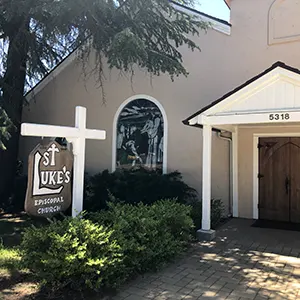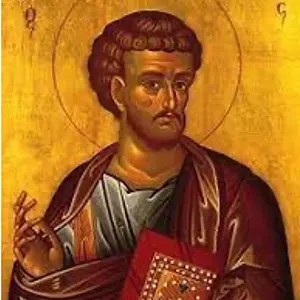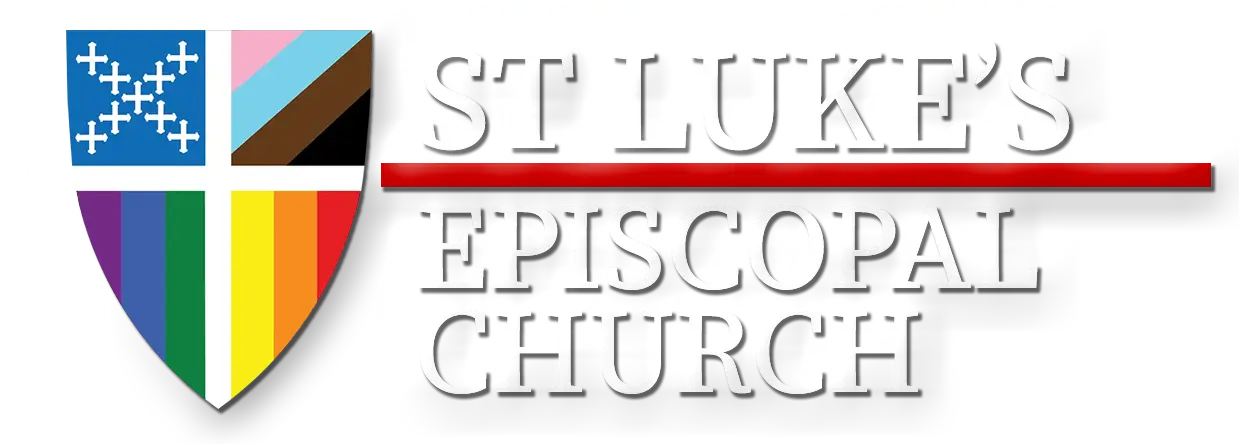St Luke’s History
Who We Are
 St. Luke’s Atascadero is a community where love is expressed and experienced through generous hospitality, joyful and musical worship, service and mission, generous stewardship, and spiritual growth for members of all ages.
St. Luke’s Atascadero is a community where love is expressed and experienced through generous hospitality, joyful and musical worship, service and mission, generous stewardship, and spiritual growth for members of all ages.
Our History
In 1950 a small group of women from Atascadero decided they would like to begin their own mission. The mission of St. Luke the Evangelist was founded April 1, 1951. The women decided on the name because Luke was a physician and they wanted the church to be based on the principles of healing and evangelism. .
In 1958 the congregation moved into it’s first building,
In 1958 the congregation moved into it’s first building, which had been purchased from the Church of the Nazarene. One of the first special services to be held there was the dedication of the church and the parish hall, which at the time was the vicarage. The first vicar, the Rev. George T. Eppley was ordained at St. Luke’s in November, 1958.
In 1963 a vicarage was rented and the “little house” became an office and Sunday School building.
On May 7, 1969 the hand carved doors sculptured by Lester Guy were dedicated. The doors depict the Annunciation and the Crucifixion.
In the 1970’s a renovation of the church was carried out.
New seats, kneelers, carpet and serving tables were added. The kitchen was completely refurbished and a parking lot was purchased. In 1980 St. Luke’s joined in the formation of the new Episcopal Diocese of El Camino Real.
The Rev. Matthew M. Conrad was installed in January, 1984
During this year the offices were moved to the cottage, a new porch was added to the front of the church and Loaves and Fishes began using our facilities. During the 1980’s considerable improvements were completed on the church property including renovation of the Undercroft and landscaping of the grounds. In 1989 the tradition of processing from the Sunken gardens to the church on Palm Sunday was begun.
In October 1993 the reflection garden in the back yard was dedicated.
In 1997 the mission began the process of becoming a self supporting parish. In 1996 Loaves and Fishes moved from the Undercroft to their own building. They commissioned and donated St. Luke’s first stained glass window, appropriately depicting the miracle of the loaves and fishes.
In Lent of 1998 we institute our third Sunday liturgy
This is a service of meditation and song based on the liturgy of the Taize Community in France. Our tradition of laying out a labyrinth on the floor of the nave also begins. Gay Blundell begins her ministry with us as deacon intern. The new Reflection Area on the north side of the church is constructed with funds from the Jerry Lant and Kenneth Fielder memorials.
January 16, 1999, St. Luke’s became a Parish.
In September, the Youth Arts Activity Center was begun to meet the communities needs for before and after school childcare. In 1999, St. Luke’s installed our second stained glass window, “An Invitation to Wholeness” and began another major renovation of the undercroft and kitchen
A new steeple cross was dedicated to the glory of God
in loving memory of Herbert Gorman and in thanksgiving for Hallie’s life among us. Herbert had been involved in the raising of the first steeple cross in November 1958 when the building was purchased. The new cross was installed on Sunday, December 10th.
Fr. Matthew Conrad retired on June 30, 2018
Fr. Merritt Greenwood was appointed as Interim Rector in December 2018. Fr. Merritt Greenwood moved to be an Interim for another congregation in the Sacramento area in March of 2023.
Where we are today.
Rev. Linzi Stahlecker joined us as our quarter time priest-in-charge in September 2024. We also regularly enjoy the meaningful presence of our supply priests, Rev. Karen Siegrriedt and Rev. Richard Rollefsoon each month. We are a diverse congregation with many opportunities to worship and serve.
Our Patron Saint

Luke was a Gentile, a physician, and one of Paul’s fellow missionaries in the early spread of Christianity through the Roman world. He has been identified as the writer of both the Gospel which bears his name, and it’s sequel, the Acts of the Apostles. Luke wrote in Greek, so that Gentiles might learn about the Lord, whose life and deeds so impressed him. Only Luke provides the familiar stories of the annunciation to Mary, of her visit to Elizabeth, of the child in the manger, the angelic host appearing to the shepherd’s and the meeting with the aged Simeon. (Excerpted from Lesser Feasts and Fasts, The Church Hymnal Corporation, Third Edition, 1980)
The feast day of St Luke is October 18th. The symbol of the winged ox, which is assigned to Luke, is a reference to his Gospel, which accents the sacrificial nature of Christ’s life.
